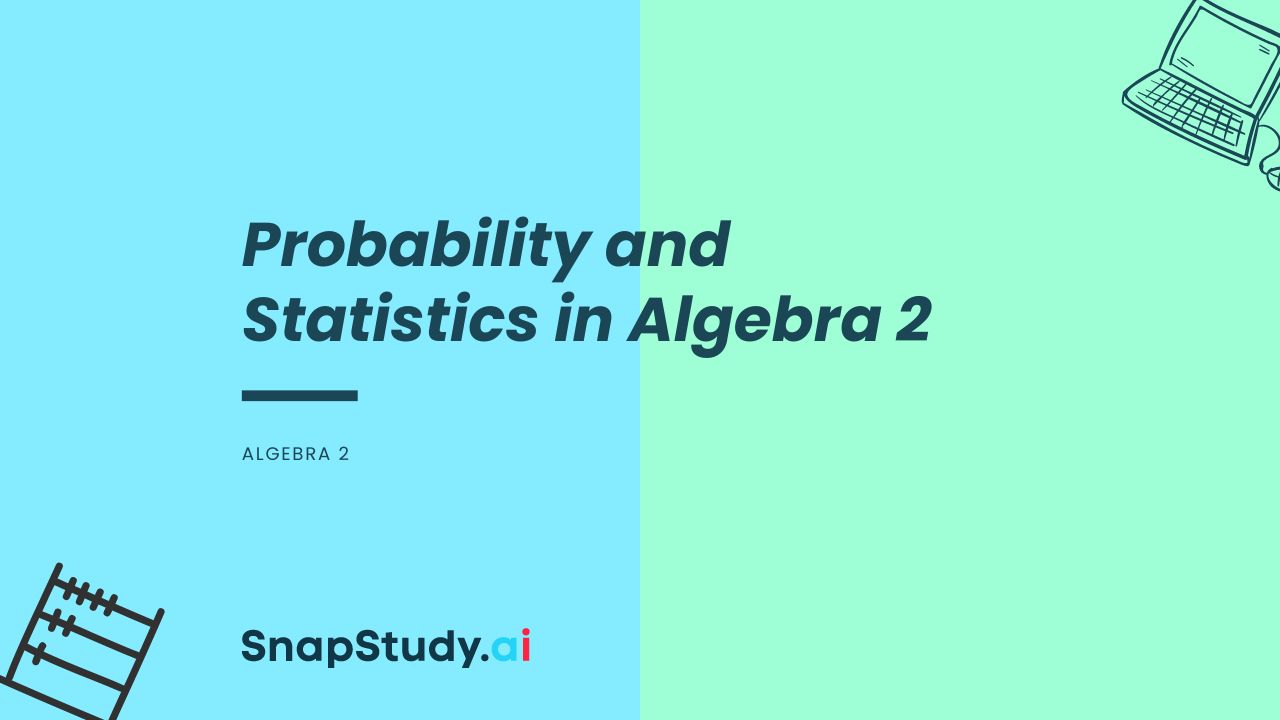Introduction
The disciplines of probability and statistics have established themselves as crucial components of Algebra 2 curriculum. This is because they provide students with a deeper understanding of the world around them, transforming them into informed decision-makers and accurate predictors of various outcomes.
Basic Concepts
Probability
Probability is a mathematical concept that measures the likelihood of a particular event happening. It is represented as a number between 0 and 1. A probability of 0 indicates that the event is impossible— it will not occur. On the other hand, a probability of 1 implies certainty— the event will definitely occur. This concept forms the backbone of many decisions and predictions in various fields, from business to sports to weather forecasting.
Statistics
Statistics, another fundamental of Algebra 2, is a branch of mathematics that handles the collection, analysis, interpretation, presentation, and organization of data. It equips students with the tools to make sense of data, draw meaningful conclusions, and make informed predictions. In Algebra 2, students delve into the world of statistics, learning to analyze and interpret data using a variety of statistical methods.
Probability in Algebra 2
Probability in Algebra 2 introduces students to the calculation of the probability of simple and compound events. They also gain knowledge about mutually exclusive and independent events, concepts that further their understanding of probability.
Simple Events
A simple event in probability is an event that consists of a single outcome. It is the most basic kind of event in probability. To calculate the probability of a simple event, one can divide the number of ways the event can occur by the total number of possible outcomes. This core concept lays the foundation for understanding more complex probability scenarios.
Compound Events
A compound event is an event that involves more than one simple event. The calculation of the probability of a compound event requires the application of the principles of addition or multiplication, depending on whether the events are mutually exclusive or independent. This is a deeper, more complex aspect of probability that strengthens students’ understanding of the subject.
Statistics in Algebra 2
When studying statistics in Algebra 2, students explore a variety of statistical measures. These include mean, median, mode, and range— measures of central tendency that provide important insights about a data set. They also learn about measures of dispersion such as variance and standard deviation, which offer a measure of how spread out the values in a data set are.
Mean, Median, Mode, and Range
The mean is the average of a set of numbers, calculated by adding all the numbers in a set and dividing by the count of numbers. The median represents the middle value when the numbers are arranged in ascending or descending order, providing a measure that isn’t skewed by outliers. The mode is the number that occurs most frequently, while the range shows the spread of values by indicating the difference between the highest and lowest values.
Variance and Standard Deviation
Variance and standard deviation are measures of dispersion in a data set. Variance quantifies how spread out the numbers in a data set are, while the standard deviation, being the square root of the variance, gives an idea of how much the values in the data set deviate from the mean. These concepts allow students to quantify the level of variability or dispersion in a data set.
Conclusion
The study of probability and statistics in Algebra 2 serves as a powerful tool for students, equipping them with the necessary mathematical skills to comprehend and interpret the world around them. By mastering these topics, they become adept at making accurate predictions and informed decisions, skills that are applicable in various aspects of life and various career paths.





